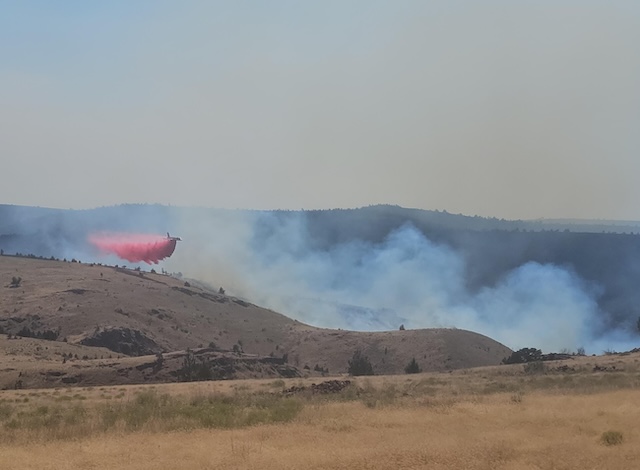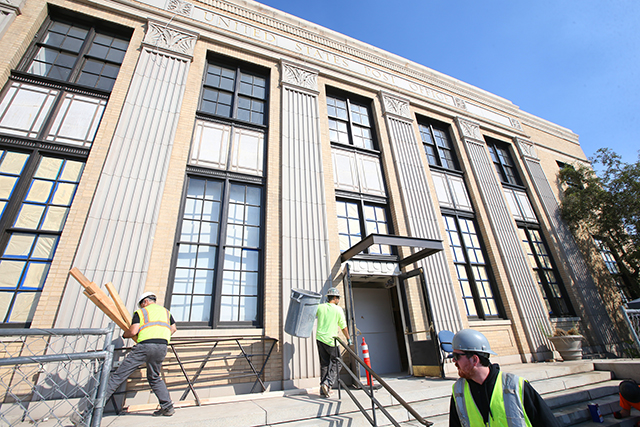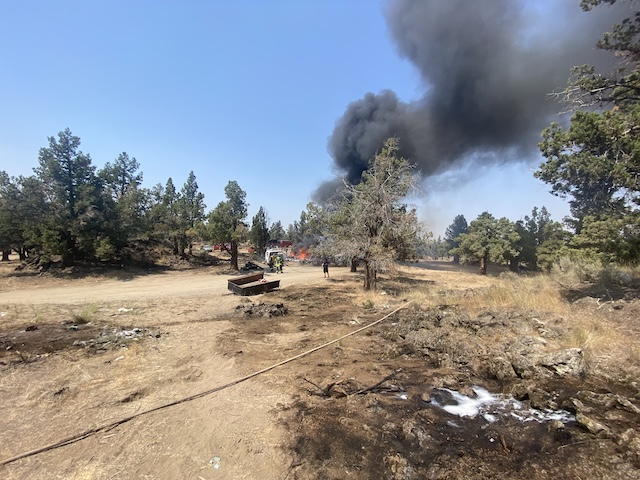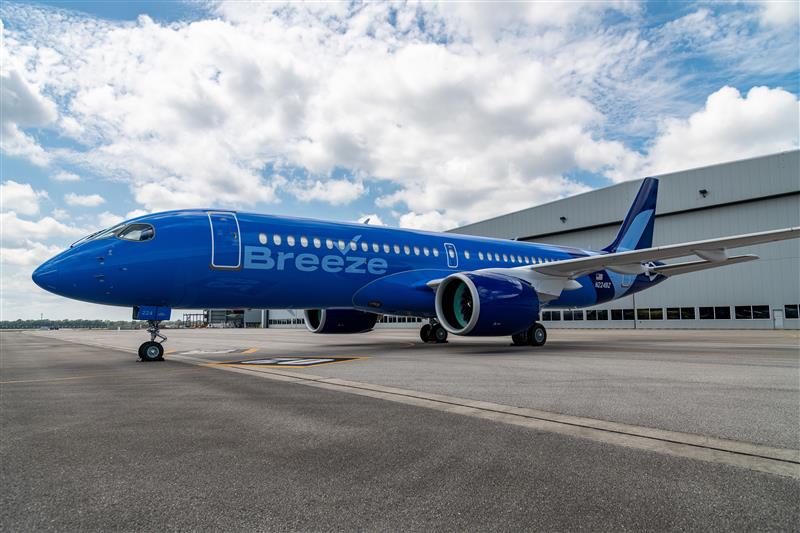As California weighs law, pot part of everyday life
Published 5:00 am Monday, August 16, 2010

- Robert Girvetz, of San Juan Capistrano, Calif., enjoys smoking marijuana from a vaporizer. The 78-year-old says he smokes only occasionally for recreation. As California ponders the legalization of marijuana, a Sacramento Bee study reveals the plant is already deeply woven into society.
SACRAMENTO, Calif. — John Wade, 43, a San Francisco commercial lighting specialist, takes a quick hit from a marijuana cigarette on the golf course to steady himself before putting.
Sarika Simmons, 35, of San Diego County, sometimes unwinds after the kids are asleep with tokes from a fruit-flavored cigar filled with pot.
Trending
And retiree Robert Girvetz, 78, of San Juan Capistrano, recently started anew — replacing his occasional martini with marijuana.
“It’s a little different than I remember,” he says. “A couple of hits — and wooooo … ”
As California voters prepare to decide in November whether to become the first state to legalize marijuana for recreational use, a Field Poll conducted for The Sacramento Bee reveals that weed already is deeply woven into society.
Those who use the drug, and their reasons for doing it, may be as diverse as the state itself.
Forty-two percent of adults who described themselves as current users in the July poll said they smoke pot to relieve pain or treat a health condition. Thirty-nine percent use it recreationally, to socialize or have fun with friends.
Sixty percent say marijuana helps them relax or sleep. Twenty-four percent say it stimulates their creativity.
Trending
Use lower than in the ’70s
Historically, marijuana use in California remains lower than during peak years of the late 1970s. But voters’ approval of Proposition 215, the Compassionate Use Act — which made the state the first to legalize medical marijuana — is changing the social dynamic, according to poll results and interviews with users in 15 counties.
“It’s certainly likely that post-Proposition 215, it has become more mainstream, and the base of users has broadened,” said Craig Reinarman, a University of California Santa Cruz sociology professor who has studied marijuana in society.
Other measures back the Field Poll findings:
• More than 400,000 Californians use marijuana daily, according to the state Board of Equalization. And state residents consume 16 million ounces of weed a year, from legal and illegal sources.
• More than 3.4 million Californians smoked pot in 2008, according to the latest research by the National Survey on Drug Abuse and Health.
And, in the Field Poll, 47 percent of registered voters said they have used marijuana at least once in their life. That exceeds the registration of any political party in the state.
Marijuana use in California extends well beyond any stoner stereotype.
“I don’t walk around in Bob Marley T-shirts or have a marijuana flag in my room,” said Kyle Printz, 44, a Marin County software engineer.
Printz occasionally smokes pot after writing computer code — “and dealing with zeros and ones all day long.” He said, “It alters your state of mind a bit and does help you relax.”
It’s a necessity, some say
Deborah Pottle, 56, a disabled former state corrections officer from Modesto, has a physician’s recommendation for marijuana for her back injuries and a precancerous condition. She prefers cannabis in lozenges and brownies, and melds pot flakes into spaghetti sauce and high-protein meals.
“I find it better by a long shot than … trying to keep pills down,” said Pottle, who sees marijuana only as a medical remedy — not recreation.
Nationally, more than 100 million Americans have tried marijuana, and 10 states — led by Rhode Island, Vermont and Alaska — have higher per capita use than the Golden State.
But in California, a proliferating industry of medical cannabis dispensaries, offering exotic strains such as “Blue Dream,” “Train Wreck” or “Green Crack,” helps supply a vast market, including many people who never venture inside a pot shop.
According to the state Board of Equalization, California marijuana dispensaries — intended to serve bona fide medical users, including AIDS, cancer and chronic pain sufferers — produce up to $1.3 billion in marijuana transactions for people reporting a vast range of ills.
“I’m sure there are people who suffer from any number of maladies that seek therapy from marijuana use,” said Sacramento County Sheriff John McGinness. “But for at least as many, I think it’s a ruse for healthy people who enjoy the effects of marijuana.
“That’s how they obtain it without hassle.”
Ngaio Bealum, editor of West Coast Cannabis, a 50,000-circulation lifestyle publication that bills itself as the Sunset magazine of weed, says the dispensary evolution and sophisticated growing techniques are changing California’s pot culture.
But he said illegal marijuana trafficking lives on to satisfy the demand.
“The old-school weed man still exists, but he’s had to step his game up,” Bealum said. “Now when you go to the clubs (dispensaries), you’ve got 50 different kinds” of pot strains. “The weed man now has to offer a few different kinds — and start making brownies, too.”
California decriminalized marijuana use and possession 34 years ago. People caught with less than an ounce face a misdemeanor that carries a $100 fine. Those with medical recommendations now can legally possess up to 8 ounces. Marijuana has found niches in the California lifestyle with young people starting their careers, affluent baby boomers and urban professionals.
Though current use is highest among people between 18 and 29 and earning less than $40,000 a year, pot also is finding a significant foothold among many reaching their prime career-earning years.
Steven Keegan, 40, a Los Angeles sporting goods designer, earns more than $100,000 marketing to Fortune 500 companies. He says he smokes pot before a typical weekend day spent with his girlfriend at L.A.’s Zuma Beach.
‘Woody Harrelson’
At bedtime, he relaxes with “Woody Harrelson” — a popular cannabis strain named for the actor, an outspoken booster of marijuana use.
“I can come home from work, and if I’m up at night thinking about various projects, I’ll just take a hit and … I can go to sleep,” Keegan said.
Pot marketing is booming with the burgeoning medical marijuana industry.
MediCann, a California physicians network that has overseen referrals for more than 200,000 patients, portrays medicinal marijuana use as a mainstream experience.
Its “typical stoner” ad campaign features photos of real estate agents, marketing executives, veterans, community volunteers, professors and plumbers who find relief for anxiety, arthritis, nausea, sleeplessness or back pain.
By contrast, an advertisement for Los Angeles’ Grateful Meds dispensary appears to pitch mind-altering rewards.
“The place where patients are high-spirited!” says an ad in a Los Angeles pot culture magazine. With depictions of semi-nude women, the advertisement offers free joints or pot brownies for each new “patient.”
“This is what we’ve come to,” said John Redman, executive director of Californians for Drug Free Youth. Such appeals attract young adults and make a drug culture attractive to teens, he said. “How is it that we as a society cannot look at that?”
Redman contends depictions of pot as a cool and natural alternative to other drugs are akin to the Joe Camel ads that were blamed for drawing kids to cigarettes.
According to national drug survey data, one-third of current California marijuana users are 18 to 25. Twelve percent — nearly 425,000 — are ages 12 to 17.








